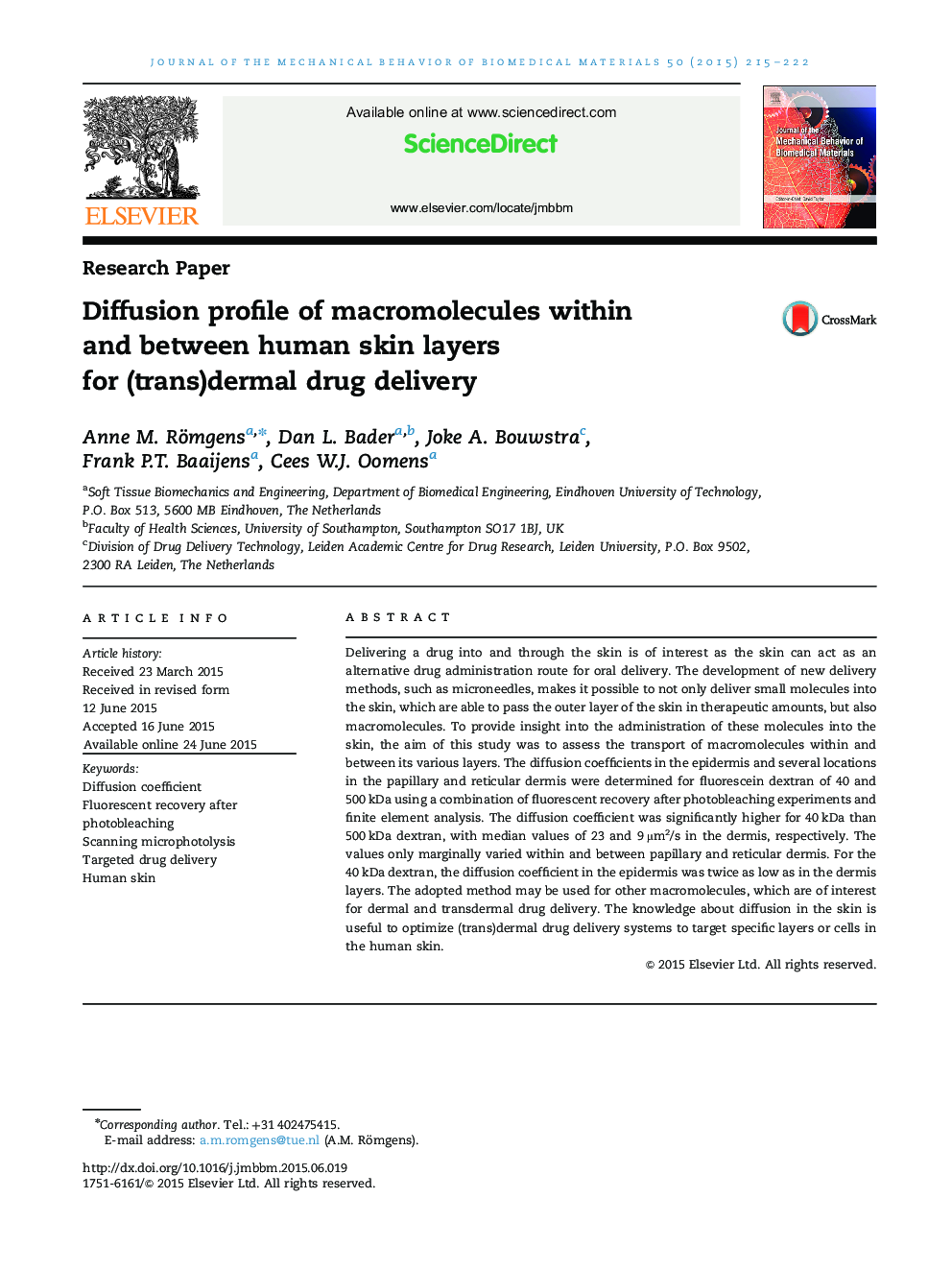| Article ID | Journal | Published Year | Pages | File Type |
|---|---|---|---|---|
| 7208430 | Journal of the Mechanical Behavior of Biomedical Materials | 2015 | 8 Pages |
Abstract
Delivering a drug into and through the skin is of interest as the skin can act as an alternative drug administration route for oral delivery. The development of new delivery methods, such as microneedles, makes it possible to not only deliver small molecules into the skin, which are able to pass the outer layer of the skin in therapeutic amounts, but also macromolecules. To provide insight into the administration of these molecules into the skin, the aim of this study was to assess the transport of macromolecules within and between its various layers. The diffusion coefficients in the epidermis and several locations in the papillary and reticular dermis were determined for fluorescein dextran of 40 and 500 kDa using a combination of fluorescent recovery after photobleaching experiments and finite element analysis. The diffusion coefficient was significantly higher for 40 kDa than 500 kDa dextran, with median values of 23 and 9 µm2/s in the dermis, respectively. The values only marginally varied within and between papillary and reticular dermis. For the 40 kDa dextran, the diffusion coefficient in the epidermis was twice as low as in the dermis layers. The adopted method may be used for other macromolecules, which are of interest for dermal and transdermal drug delivery. The knowledge about diffusion in the skin is useful to optimize (trans)dermal drug delivery systems to target specific layers or cells in the human skin.
Keywords
Related Topics
Physical Sciences and Engineering
Engineering
Biomedical Engineering
Authors
Anne M. Römgens, Dan L. Bader, Joke A. Bouwstra, Frank P.T. Baaijens, Cees W.J. Oomens,
